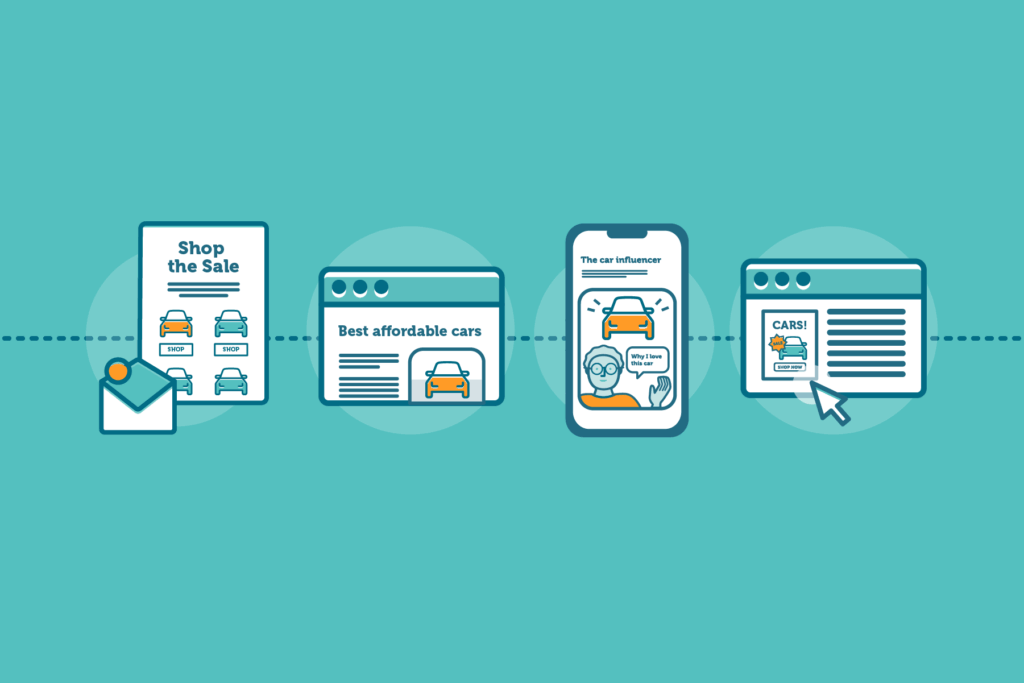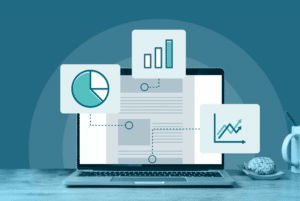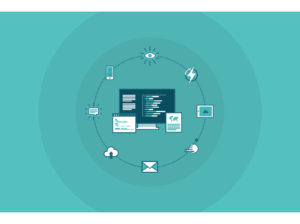How to Develop an Effective Content Distribution Strategy

You’ve poured your expertise into crafting that insightful blog post, that comprehensive guide, or that compelling video. You’ve nailed the research, polished the prose, and optimised for SEO. But then… silence. Or, at best, a trickle of traffic. Sound familiar?
Sometimes we need to stop creating and start amplifying.
Here’s the truth: without an effective content distribution strategy, even the most brilliant content is essentially invisible. It's like building an architectural marvel in the middle of a desert – impressive, but no one will ever see it. The missing link? An effective content distribution strategy.
Why distribution is the missing link in your content strategy
Many businesses focus heavily on content creation, pouring resources into producing high-quality content. This is absolutely essential, but it's just the start of something much more powerful: getting that content seen.
That's what a distribution strategy does. You create content for your website and then distribute that content elsewhere so that others can enjoy it too. Basically, once you've created that content, you need to market it!
It’s the bridge between a great idea and tangible business goals like generating leads, increasing brand awareness, and boosting sales. A truly successful content marketing strategy doesn't just create; it actively distributes.
How to build a content distribution strategy
The real win when it comes to content creation is getting that digital content into the hands (and minds) of your target audience. This is what we call "content marketing".
This isn't about blindly pushing digital content onto every platform. It’s about a deliberate, strategic plan to connect your valuable content with the right people, at the right time, on the right channels.
Let's look at how to develop an effective content distribution strategy that turns your content creation process into a marketing strategy designed for growth.
Phase 1: Developing strategic foundations for your content distribution strategy
Before you blast your digital content everywhere, take a second. A well-defined content distribution strategy starts with understanding your landscape and your ambitions.
Know your target audience (intimately)
This is the bedrock of any effective content strategy. Where do your target customers spend their time online? What social media platforms do they use? What publications do they read? What are their preferred content formats? Understanding their customer journey and where they look for information at each stage of the buyer's journey is paramount for your content distribution strategy. Your content marketing strategy hinges on this insight.
Quick tip: Don't assume. Conduct market research, read your reviews and survey existing clients. Get to know your customers and their buying journeys.
Define your business goals for distribution
What do you want this content distribution strategy to achieve? Is it primarily for lead generation, driving website traffic, boosting brand recognition, or improving search engine rankings? Clear business goals will dictate your choice of marketing channels and your content distribution channels. Your overall marketing strategy should inform your content distribution strategy.
Audit your existing content
A comprehensive content audit can help you identify gaps in your distribution for existing content and pinpoint outdated content that needs a refresh before being re-distributed. This step is crucial for any effective content strategy.
Phase 2: Owned channels – maximising your home base
These are the marketing channels you fully control. They are the backbone of your content distribution strategy and where your digital content ultimately lives, for example:
Your company website
Your content management system is your central content hub. Every piece of valuable content starts here. Ensure your blog posts are optimised for search engine results pages (SERPs) and easy to share. Our SEO checklist for optimising web content can help here. Ensure your landing pages are targeting customers in the right buyer stage and are keyword targeted to show up in the SERPs when your buyers are ready to make a purchase. Use dedicated landing pages for gated digital content like e-books or whitepapers, serving as crucial points for lead generation in your marketing funnel.
Email marketing
Marketing emails have an average open rate of 35.63%. This is an incredibly powerful content distribution channel. Nurture leads, promote new blog posts, and share curated digital content directly with your subscribers. It's like a private social media channel between you and your potential buyers and should be a core component of any strong marketing strategy.
Phase 3: Earned channels - Spreading the word organically
Phase 3 uses third-party platforms and user engagement to amplify your message. This phase of your content distribution strategy is all about organic reach.
Social media accounts
Your organic social media content strategy is vital. Share compelling social media posts on various social media platforms. Don't just post links; craft engaging social media posts that spark social media engagement and encourage shares.
Strategic tip: Tailor social media posts for each platform. LinkedIn for professional insights, Instagram for visuals, X for quick tips and conversation, etc. Tailor the tone of the copy and the designs to ensure you cater to the different audiences on each platform. Encourage user-generated content related to your brand.
Guest posting & collaborations
Write blog posts for other relevant industry websites. This is most commonly called guest posting. This exposes your digital content to new audiences, cements your brand as an industry or thought leader and builds valuable backlinks, supporting your overall content marketing strategy.
Online communities & forums
Participate in relevant forums (like Reddit and niche industry boards). Share your digital content where it's genuinely helpful, but avoid spamming content as this can cause frustration with forum members and admins.
Public relations & media relations
Craft strategic press releases for major announcements or valuable content that warrants media attention. This is what we like to call Digital PR. It can boost brand awareness significantly, earn more backlinks and get you in front of more potential customers.
Phase 4: Paid channels - strategic amplification for content distribution
When organic reach isn't enough, paid content distribution offers precise targeting and accelerated reach for your digital content.
Social media ads
Run targeted social media ads on social media platforms like Facebook, LinkedIn, or X to promote specific blog posts, landing pages, or lead magnets to a highly defined target audience. Paid ads can drastically increase your audience engagement.
Search Engine Marketing (SEM)
Consider paid search ads that appear on search engine results pages for relevant keywords, directing prospective customers to your digital content assets. This complements your efforts to increase organic traffic.
Content syndication
Partner with publishers or platforms to republish your digital content on their sites, reaching their established audiences. This often involves paid content distribution.
Influencer marketing
Collaborate with industry influencers who can share your digital content with their followers, offering targeted exposure. This is a form of paid content distribution that can boost brand awareness.
Paying to advertise every new blog post on your social media pages is overkill, and the costs will add up quickly. However, a strategic approach to advertising key pieces of content, whether guides, events or new products, can put them right in front of your audience quicker than organic approaches.
Phase 5: Measure, analyse, & adapt - the continuous loop
Developing an effective content distribution strategy is not a one-time setup; it’s an ongoing process of measurement and refinement. Here's some ways to measure the results of your campaigns:
Utilise Google Analytics: Track website traffic, conversions, and user behaviour originating from your various content distribution channels.
Monitor Search Engine Results Pages (SERPs): Keep an eye on your search engine rankings for key terms. Use tools like Google Search Console to identify areas for improvement in your content strategy.
Track social media metrics: Monitor engagement, shares, and referral traffic from your social media posts across all social media platforms.
Review your content calendar: Based on the data you're seeing elsewhere, adjust your content calendar accordingly. What's working? What isn't? Periodically review your content distribution strategy to ensure the content you have planned is going to move the needle.
Perform regular content audits: Regularly review existing content to ensure continued relevance and identify new content gaps or outdated content that could be repurposed for new content distribution efforts.
This data-driven approach is a key element of any successful content marketing strategy.
Distribute with purpose, not just presence
Your content creation efforts deserve to be seen, consumed, and acted upon. A well-developed content distribution strategy transforms your content marketing efforts from a passive expense into an active, high-performing asset that directly fuels your business goals.
It's time to stop publishing content into the void and start strategically distributing content that truly resonates with your target audience at every stage of their buyer's journey. This is how you move beyond simply having content to truly dominating your market.
Need help building a content distribution strategy that delivers unstoppable growth?
Want to learn more about how strategic content can help your business grow? Get in touch today, and we'll help develop a content distribution strategy that grows your business. Don't let your valuable content sit idly by. Let's design a strategic plan to get your message heard and seen by the right people.





